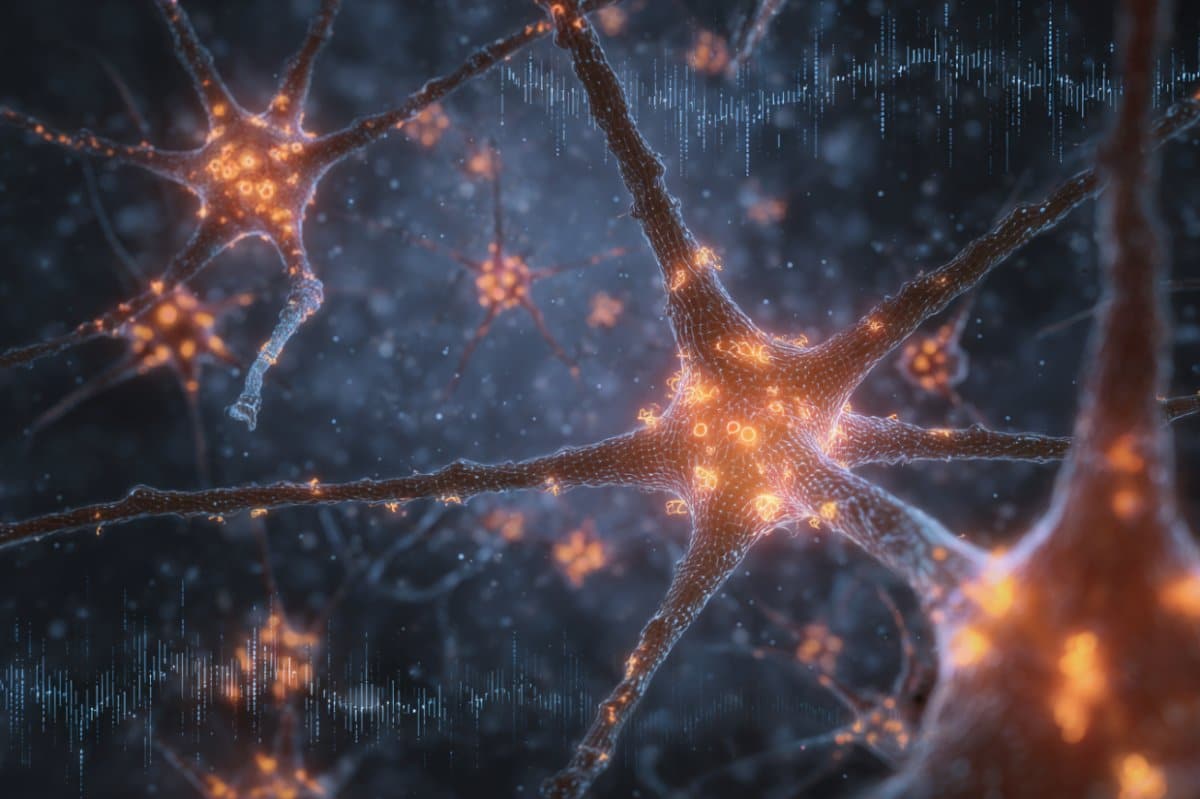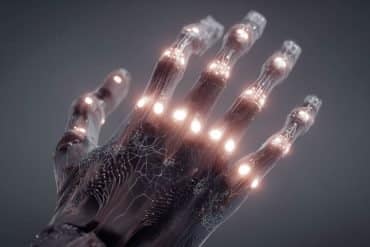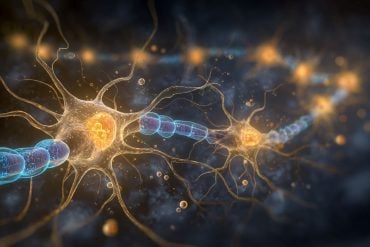Summary: New research highlights how astrocytes, long considered mere support cells, actively shape brain network dynamics. Using computational models and machine learning, researchers showed astrocytes fine-tune synchronized neural activity crucial for memory, attention, and sleep.
These glial cells subtly influence rhythmic brain states, undetectable by conventional metrics but revealed through advanced analytics. The findings suggest a more prominent role for astrocytes in brain function and potential therapies targeting neuron–glia interactions.
Key facts:
- Astrocytes actively modulate synchronized brain rhythms, not just support neurons.
- Machine learning revealed astrocytes’ subtle influence missed by traditional measures.
- Their role in network coordination could inform new treatments for brain disorders.
Source: FAU
Long overlooked and underestimated, glial cells – non-neuronal cells that support, protect and communicate with neurons – are finally stepping into the neuroscience spotlight.
A new Florida Atlantic University study highlights the surprising influence of a particular glial cell, revealing that it plays a much more active and dynamic role in brain function than previously thought.

Using sophisticated computational modeling and machine learning, researchers discovered how astrocytes, a “star” shaped glial cell, subtly – but significantly – modulate communication between neurons, especially during highly coordinated, synchronous brain activity.
“Clearly, glial cells are significantly implicated in several brain functions, making identifying their presence among neurons an appealing and important problem,” said Rodrigo Pena, Ph.D., senior author, an assistant professor of biological sciences within FAU’s Charles E. Schmidt College of Science on the John D. MacArthur Campus in Jupiter, and a member of the FAU Stiles-Nicholson Brain Institute.
“To that end, modeling can be helpful. However, the simulation of the complex interactions between glial cells and neurons is a challenging task that requires advanced computational approaches.”
The research, in collaboration with the Federal University of São Carlos and the University of São Paulo in Brazil, addresses a fundamental gap in neuroscience.
“While neurons have long dominated the conversation, glial cells – and predominantly astrocytes – have been treated as passive support structures.
“But recent discoveries have challenged this neuron-centric view, suggesting astrocytes are active participants in processes like synaptic modulation, energy regulation and even network coordination,” said Laura Fontenas, Ph.D., co-author, an assistant professor of biological sciences within FAU’s Charles E. Schmidt College of Science on the John D. MacArthur Campus, and a member of the FAU Stiles-Nicholson Brain Institute.
The study, published in the journal Cognitive Neurodynamics, takes those ideas further, showing that astrocytes influence how groups of neurons fire together, especially when the brain is in a “synchronous” state – where large populations of neurons fire in a coordinated rhythm, a condition crucial for functions like attention, memory formation and sleep cycles.
To explore this, the team generated artificial brain network data and applied a suite of machine learning models including Decision Trees, Gradient Boosting, Random Forests, and Feedforward Neural Networks to classify and detect the influence of astrocytes under different network states.
Findings reveal that Feedforward Neural Networks emerged as the most effective, especially in asynchronous (less coordinated) conditions, where capturing subtle patterns required richer and more complex data.
“Our goal was to identify the presence of glial cells in synaptic transmission using different machine-learning methods, which do not require strong assumptions about the data,” said Pena.
“We found that the Mean Firing Rate – a common experimental measure – was particularly effective in helping these models detect glial influences, especially when paired with robust algorithms like Feedforward Neural Networks.”
According to Fontenas, the researchers can now investigate these computational findings in appropriate animal models such as in the Zebrafish.
One of the study’s key findings is that astrocytes exert their strongest influence during synchronous brain states. In these conditions, advanced statistical tools such as spike-train coherence, which measures the timing relationships between neural signals, detected a shift toward more coordinated and frequency-diverse firing when astrocytes were present.
This suggests that astrocytes not only support but may also fine-tune the rhythmic dynamics of brain networks, potentially contributing to stability and information flow.
“Even with the difficulties of identifying the presence of glial cells, our study highlights the utility of machine learning in detecting their influence within neural networks, particularly by leveraging the Mean Firing Rate as an effective data collection method,” Pena said.
Traditional brain activity metrics like firing rate and coefficient of variation often miss these subtleties. The study shows that although astrocytes affect network behavior, their contributions don’t always produce large changes in conventional measures.
As a result, detecting their influence requires more nuanced tools – ones that can see beyond the obvious and identify the deeper patterns in brain activity.
As science continues to unravel the complexities of the human mind, this study is a reminder that some of the brain’s most important contributors have long gone unnoticed.
Thanks to machine learning and computational neuroscience, the invisible influence of astrocytes is now coming into view – and with it, a richer, more complete picture of how the brain really works.
“By enhancing our ability to detect glial influence through advanced statistical methods, we open new avenues for exploring how neuron-glia interactions shape brain function,” said Pena.
“It’s a critical step toward understanding neurological disorders and could inform future therapies that target not just neurons, but the entire cellular ecosystem of the brain.”
Study co-authors are João Pedro Pirola, first author and a student at the Federal University of São Carlos working in the Pena lab; Paige DeForest, a recent graduate from FAU’s Wilkes Honors College; Paulo R. Protachevicz, Ph.D., University of São Paulo; and Ricardo F. Ferreira, Ph.D., Federal University of São Carlos.
About this AI and neuroscience research news
Author: Gisele Galoustian
Source: FAU
Contact: Gisele Galoustian – FAU
Image: The image is credited to Neuroscience News
Original Research: Open access.
“Astrocytic signatures in neuronal activity: a machine learning-based identification approach” by Rodrigo Pena et al. Cognitive Neurodynamics
Abstract
Astrocytic signatures in neuronal activity: a machine learning-based identification approach
This study investigates the expanding role of astrocytes, the predominant glial cells, in brain function, focusing on whether and how their presence influences neuronal network activity.
We focus on particular network activities identified as synchronous and asynchronous.
Using computational modeling to generate synthetic data, we examine these network states and find that astrocytes significantly affect synaptic communication, mainly in synchronous states.
We use different methods of extracting data from a network and compare which is best for identifying glial cells, with mean firing rate emerging with higher accuracy.
To reach the aforementioned conclusions, we applied various machine learning techniques, including Decision Trees, Random Forests, Bagging, Gradient Boosting, and Feedforward Neural Networks, the latter outperforming other models.
Our findings reveal that glial cells play a crucial role in modulating synaptic activity, especially in synchronous networks, highlighting potential avenues for their detection with machine learning models through experimental accessible measures.






